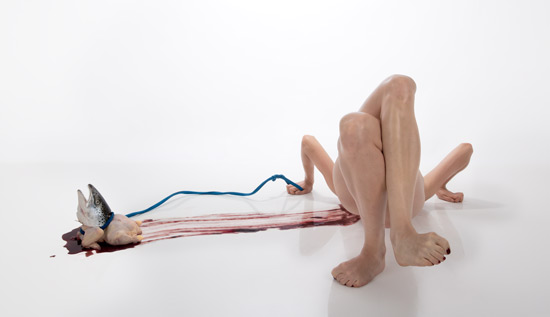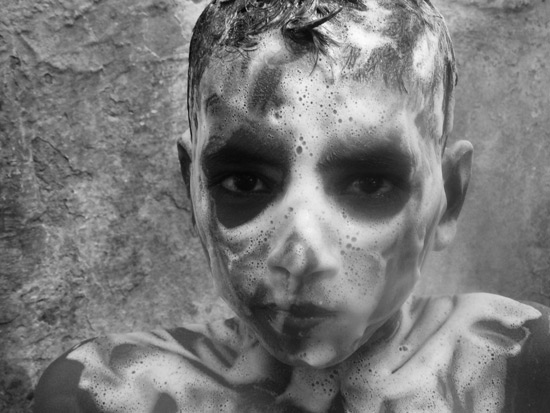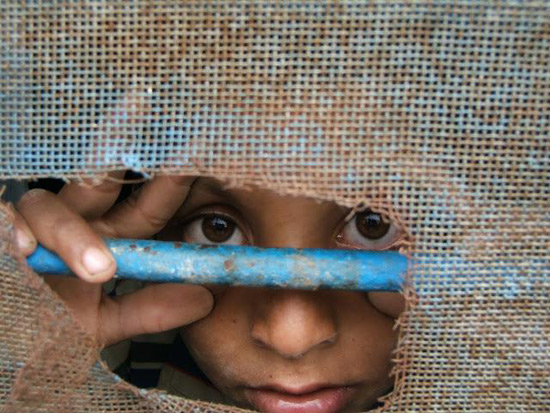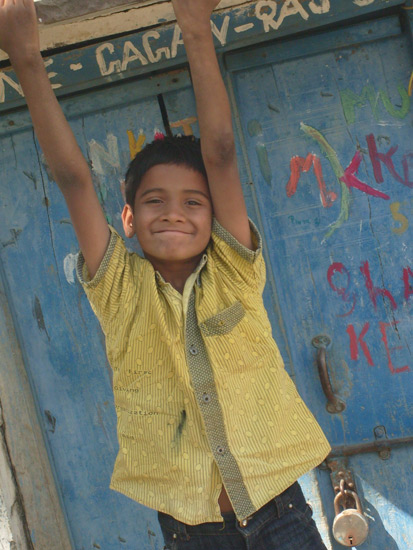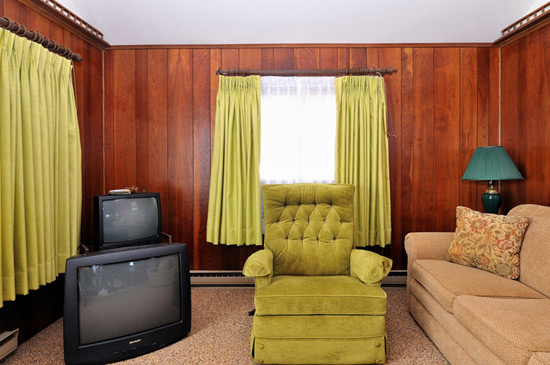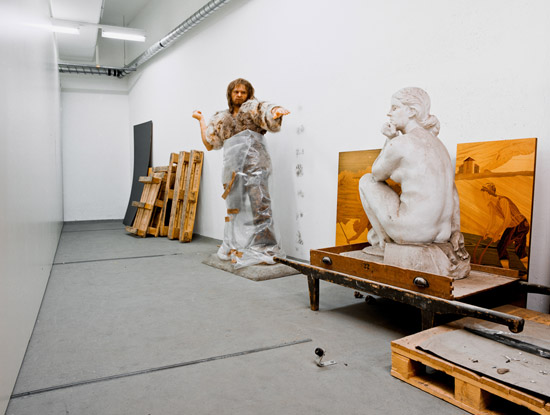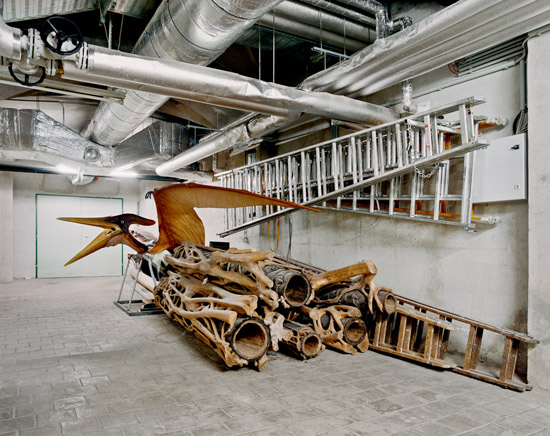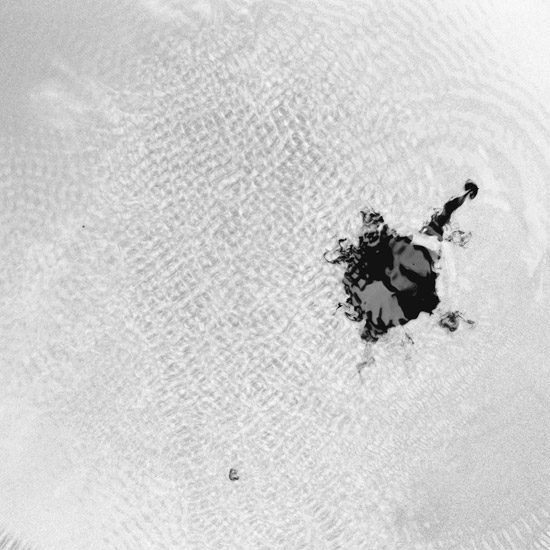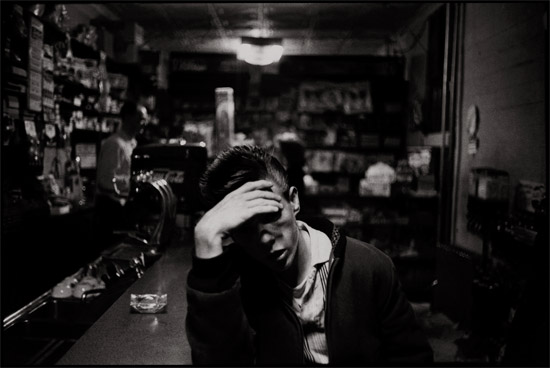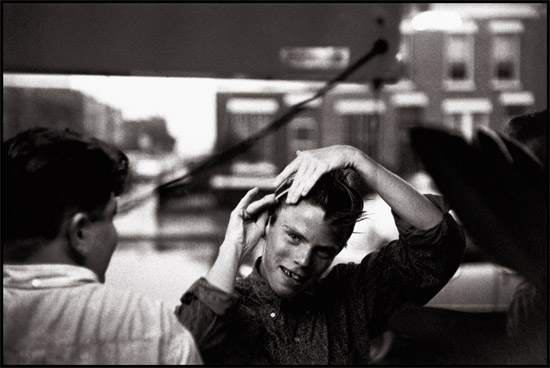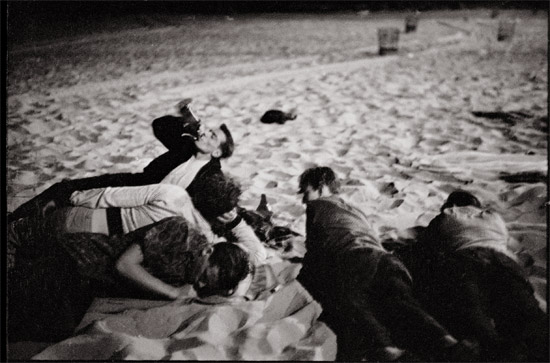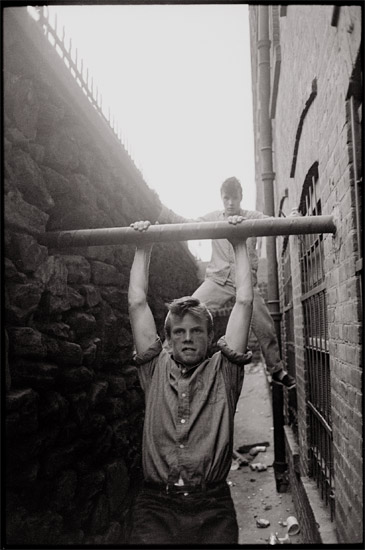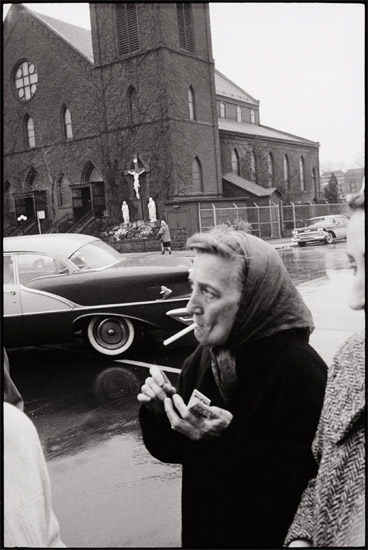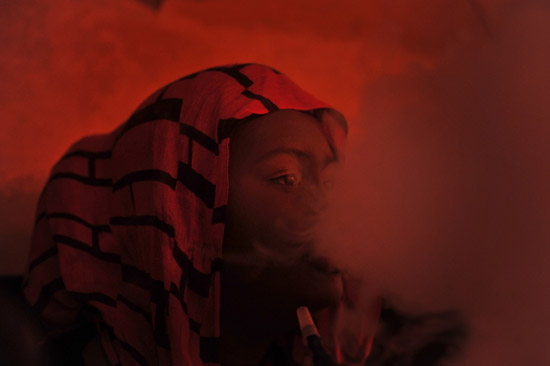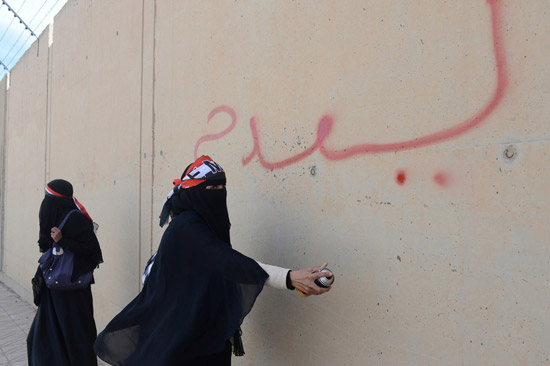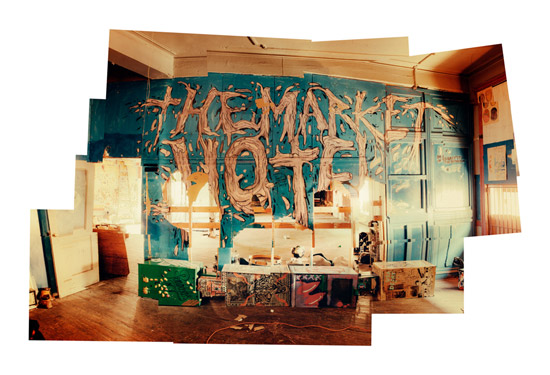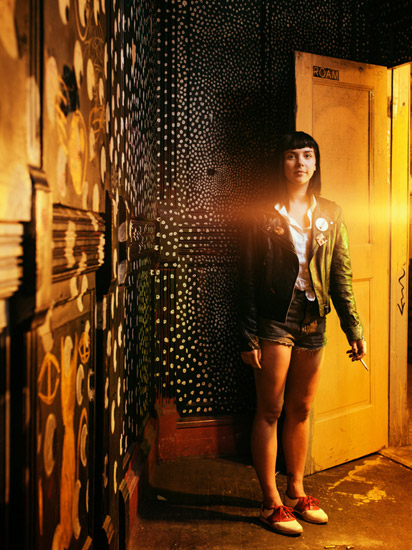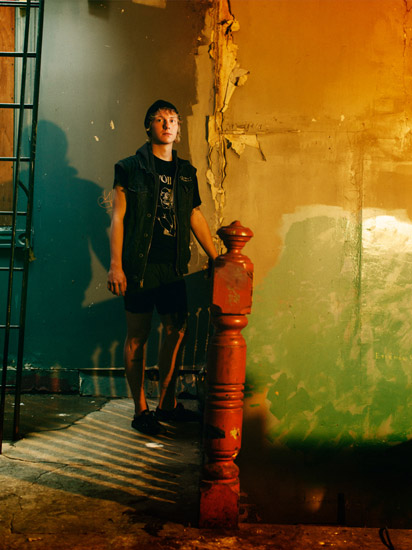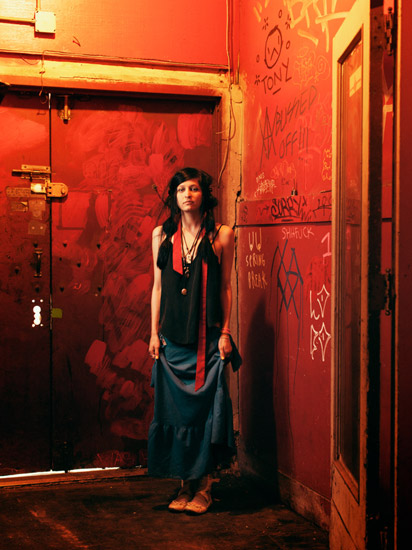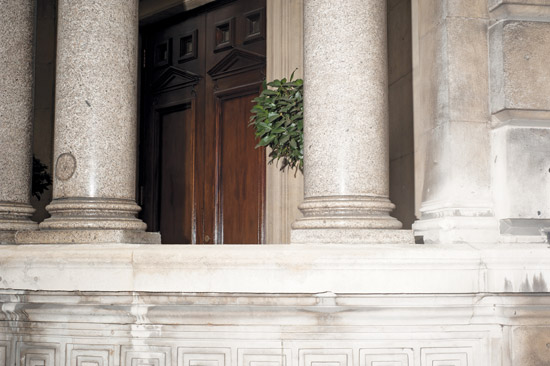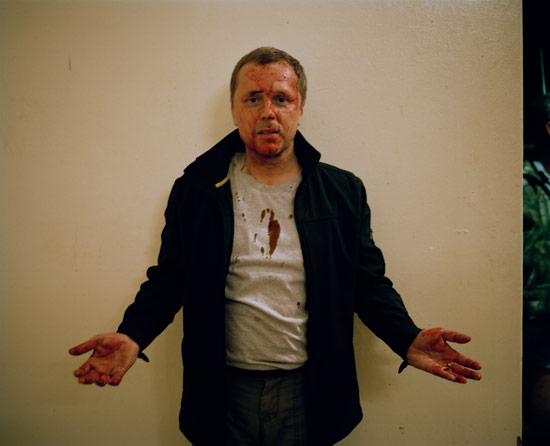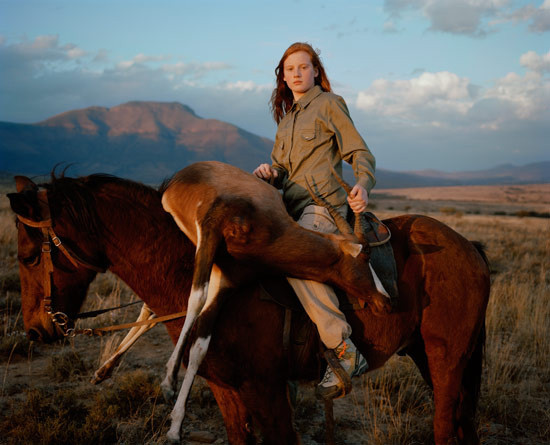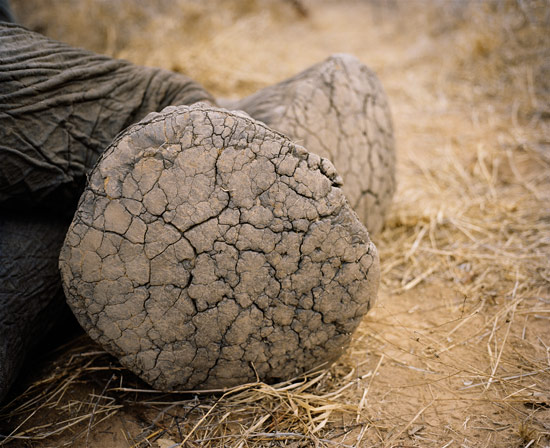"This project started out with food photography. One day, I was photographing a raw, plucked chicken carcass, and it reminded me of a naked human figure. So, I took off my clothes and got into the picture, contorting myself to mimic the shape of the chicken. I then playfully discovered how to put my body into abstract, often uncomfortable positions, to develop new creatures or 'strangers.'
"In this work, I want to go against the grain of the artistic and social conventions that tell us the human body is beautiful and graceful. This is also why I maintained the soft, all-revealing light that I was using for my still life images, and why I made the pictures as sharp as possible. Too often, photography flatters the human figure for no good reason other than to make us feel better about ourselves. In this project, I wish viewers to see human body in a new way."
Photo by Girdhari
'Life through the Lens' Participatory Photography Project is organised by the UK registered charity
Basti Ram which is looking for support through camera and SD card donations, among other things.
"The project was developed to give young people from a developing country the chance to show their lives to the world in an honest and uplifting way. Too often we see 'poor' people's lives through the eyes of Western photographers who, even with the best of intentions, are often biased in the way they see. Too often, poverty looks hopeless and defeated. This project aims to offer a new perspective. It strives to demonstrate that young people living in deprived circumstances (in this case, boys from the Boys Destitute Home in Rajasthan, India); can have strength and passion for their surroundings and their lives. In the images the boys create, they depict their own lives and interests, and enhance them with their own written observations.
Basti Ram exists to help these communities realise their own potential, and to enable ordinary people to do extraordinary things. By mentoring the boys through the basics of photography, the self-funded volunteers who join this project offer the foundation for a new skill set. Such new skills can provide a genuine alternative to the hazardous occupations many boys face once they are 18, such as mining in local marble mines. With an alternative set of skills and a good command of the English language, the boys are now in a much more favourable position to find work in the booming local tourist industry."
Photo by Amit
Photo by Partap
Since 2009,
Douglas Ljungkvist has been photographing the Ocean Beach neighborhood of New York's Fire Island, before and after hurricane Sandy. Long story short, Doug is compiling his impressive photographs into a book and his
fundraiser is in the final throes. Chip in, so I can get my copy!

"This project is study of a unique place in the American landscape that appeals to my vernacular taste and sense of style and order. As a photographer I am interested in the cottages still showing signs of a bygone era when wood paneling, vibrant colors, and kitsch decorations were the order of the day. I always felt it was a race against time to visually preserve the cottages. That was based on the rapid pace of cottages being renovated and modernized to attract more potential vacationers on the competitive rental market.
But instead it was nature that pushed me to continue the project after I thought it was completed, due to the devastation caused by Hurricane Sandy in October, 2012. Once access was restored to the barrier island in early 2013 I resumed photographing extensively with a focus on the cottages facing the ocean and hardest hit. Since then 35 of the 39 ocean-facing cottages have been demolished. Hundreds more will need to be gutted or demolished due to the damage from standing water when the ocean and bay waters met."
Read about the history of Ocean Beach over on
Doug's Kickstarter page whilst you browse which reward you're going to spring for...
Klaus Pichler's photographs from '
Skeletons in the Closet,' his project made in the Museum of Natural History, Vienna, from 2008 - 2011, are entertaining and at times baffling. He got the idea to gain access to the storage areas after he caught a glimpse into the museum's basement one night where he saw "an office with a desk, a computer, shelves and a stuffed antelope."
Klaus has now self-published a
limited edition book of the work. Every page is a winner and I love its format: small, square, utilitarian grey cardboard cover, but with a round window and a bear peeping through. Just €35!
Be sure to check out Klaus' other work, not least of all 'One Third,' about food waste, and 'Dust,' which turns collections of fluff into beautiful still life photos.
Pezhman Zahed is an Iranian-born, UK-based artist who recently graduated with a BA in photography from Brighton University. "My practice incorporates economic data and examines the possibility of translating non-visual data into visual forms."
Pezhman describes his engrossing, ambitious project: "Growing anti-western sentiment stemmed from five decades of struggle with the Anglo-Iranian Oil Company and the reluctant involvement in two world wars, followed by a plot to topple the most popular government in Iranian contemporary history, resulting in the 1979 Islamic Revolution."
"The photographs demonstrate excited fluids under the effect of sound waves with particular frequencies. The figures used to generate the frequencies correspond to the company's net profits, royalties to Iran and (if applicable) British taxes, in nine most critical years of the company's 42-year long activity in Iran prior to the nationalization. Accompanying the photographs are excerpts from declassified documents and found images related to the events immediately before and after Operation Ajax (the overthrow of the democratically elected Prime Minister, Mohammad Mossadegh, in a CIA/MI6-backed coup d'état in 1953)."
Bengie inside the candy store © Bruce Davidson, courtesy Seven Stories Press
"
Bobby's Book," (
Seven Stories Press, 2012) is about the life of Bob Powers (aka Bengie), a skinny, asthmatic kid born into a large Irish family in Brooklyn in the early 1940s. Bob tells his graphic tales of growing up dirt poor to alcoholic parents; about the Catholic school that overlooked him; becoming a drug addict; marriages, kids; making millions from meth, hitting the bottom and climbing up clean to become a drugs counselor.
Bruce Davidson met Bob and his gang in 1959 and began photographing them where they hung out making major trouble in South Brooklyn. Forty years after Davidson finished that project, he received a phone call from Powers, and ultimately, over the next ten years, Powers told his story to Bruce's wife, the adorable and brilliant Emily Haas Davidson.
This book is an easy and extremely engaging read (I knocked it off in a couple of hours) even if the subject matter is sometimes tough going. Bob's redemption in his own eyes, and of those family members willing to forgive him, however, is entirely uplifting and in a perfect ending, his ability to help others escape their own entrapment is truly heartening.
Bengie combing his hair outside the candy store
Under the boardwalk at Bay Twenty-two. Left to right: Norman, Junior, Willie, Henry
On the beach at Coney Island
Bengie in "the hole" at Eighteenth Street and Eighth Avenue
Bengie's mother, Mary "May," across from the Holy Name church on Prospect Avenue
All images © Bruce Davidson, courtesy of Seven Stories Press.
'Fifi' smokes an argileh water pipe at a cafe in St. Paul, MN, 2012. "I talk a lot when I smoke, but it's fun to do when we girls get together." Many parents don't approve of their daughters going out, but they find ways around the rules. © Alex Potter
Alex Potter is a young photojournalist from the Midwest living in the Middle East. She is currently based between Lebanon and Yemen.
According to her bio: Alex began her career in Minnesota, the land of 10,000 lakes. After growing restless with her nursing job, Alex picked up to document post-revolution Yemen, a land with zero lakes, but plenty of mountains to climb. In 2012, she was selected as a Rotary Ambassadorial Scholar, and moved to Lebanon.
Though she didn't study photography, Alex has attended the NYTimes Lens Review, Eddie Adams Workshop, and a VII Masterclass, which were much more beneficial than your average classroom. Since 2012 she has been chosen for the Chris Hondros Student Fellowship, Lucie Foundation Emerging Scholarship (2012, 2013), PDN Photo Annual, and American Photography 29, among others.
"Since the start of the war in Somalia, thousands of refugees have settled into bordering and western nations, part of the ever-growing Somali diaspora. One of these largest communities is in Minneapolis, Minnesota. This mid-sized city of 400,000 in the Midwest is home to an estimated 40,000 Somalis. It has been over twenty years since the first refugees arrived. Many were children at the time, now grown into a new generation of young adults, faced with the task of balancing tradition with transformation, heritage and a new identity.
The community has faced many struggles: recruitment of young men to al Shabab, gang violence, and prejudice of a mid-sized city in the Midwest. Yet through it all, the youth have thrived, and the community is revitalized. They are mentors, artists, poets, and community leaders. Though their stories are different, their message is clear and united - Hanoolaato (Long Live) Somalia."
Here's a bonus, a sample from Alex's work in Yemen:
Yemeni women spray graffiti on barrier walls leading to the Presidential Palace, demanding the former president be brought to justice, Sana'a, Yemen, 24 December, 2012. The Arabic eventually reads, ليعدم عفاش, meaning "Afash (Saleh's nickname) to be executed"
"The Market Hotel opened in 2008 in Bushwick Brooklyn as a venue for punk rock shows and loft style living for about a dozen. Both activities being done illegally due to a lack of permits and incorrect zoning. The owner recently decided to make it a legal venue and continue to play punk rock shows, but in order to get the building to code, its current residents must move out. These are portraits and interiors of the residents during the final days of the Market Hotel."
Thanks Adam! I love the collages!
'Hide and Seek: The Dubious Nature of Plant Life in High Security Spaces by Adam Walker-Smith,' is a documentary photography project created by a paranoid photojournalist, the alter-ego of British artist
Max Colson. Instigated by his discovery of the landscape design programme 'Crime Prevention Through Environmental Design' (CPTED), Walker-Smith's photographic research exposes what he sees as the 'suspect' plants of high security urban spaces.
Officially: Max Colson is a photographer from London who works with text, graphic design and most recently his intriguing alter-ego, Adam Walker-Smith. In 2013 Max was named as a UK winner of the Magenta Foundation's Flash Forward 'emerging photographer' award and was also selected by University College London's 'Urban Lab' to exhibit in their annual show at the Slade School of Fine Art; in 2012 he was exhibited as part of Photofusion's 'Annual Member's Salon'; in 2010 he featured in the 'A Luta Continua' exhibition at Newcastle's Side Gallery.

Elyse Weingarten reviews the extremely impressive book
Hunters, a photographic essay by
David Chancellor (text by Bill Kouwenhoven. Published by the good people at
Schilt, March 2013)
"If I am rabid, I am equal to what is outside." Paula Fox, Desperate Characters.
Photographer David Chancellor's book, Hunters, explores the psychology of the hunter, documenting the safaris that comprise the big game trophy industry in southern Africa. The book is divided into two parts, the first containing over a hundred full-page photographs set deep in the African wildlife; among them, portraits of hunters and huntresses posing with their prey, in the instant after the kill. It is this exigent moment - and the hope for what it could reveal - that propelled Chancellor to join hunting safaris with seasoned, lifelong hunters throughout his adopted country of South Africa, and Namibia and Zimbabwe. Each kill is a "trophy," and the rarer the species, the better.
Bow hunters in blind, Eastern Cape, South Africa
The question this book begs is "why?" Why have these hunters come all the way from their home countries to hunt animals they know to be dangerous and endangered, and come back again and again? It seems that the rush of the kill is what is being sold. The ultimate freedom is to kill, and with a hunting license, death becomes the ultimate commodity. The absence of blood on the photographed hunters, except for the occasional shirt or the ceremoniously blood-smeared face, is conspicuous. In this very lucrative business, death is sanitized.
The second part of the book contains the breathtaking photo narrative, "Elephant Story," taken near a national park in Zimbabwe. Here, the thrill of big game hunting is replaced by the consumption of game meat by a local population. The twelve photographs of this series sequentially show villagers descend upon a dead elephant and skin it, collecting the flesh for meat until all that is left are skeletal remains and bloody chunks of unusable innards. In contrast to the hunters who visit and use the gaming industry as a spiritual or aesthetic gain, those who crowd around the elephant's body are just another part of the sustainability of the natural environment. They do not shy from the blood of the animal. Here, in this landscape, death is not tidy. - Elyse Weingarten

Huntress, skinners and a nyala, Eastern Cape, South Africa
Hunter and wife, game farm, Eastern Cape, South Africa
Huntress with impala, Eastern Cape, South Africa
Novice hunter with cell phone and blesbok, Eastern Cape, South Africa
Novice hunter with recovered bullet, Bray, Northern Cape, South Africa
Huntress with buck, South Africa. Winner of the Taylor Wessing portrait prize 2010, National Portrait Gallery, London
Fallen giraffe, Somerset East, Eastern Cape, South Africa
Elephant detail # II, Zimbabwe
All images © David Chancellor/INSTITUTE
